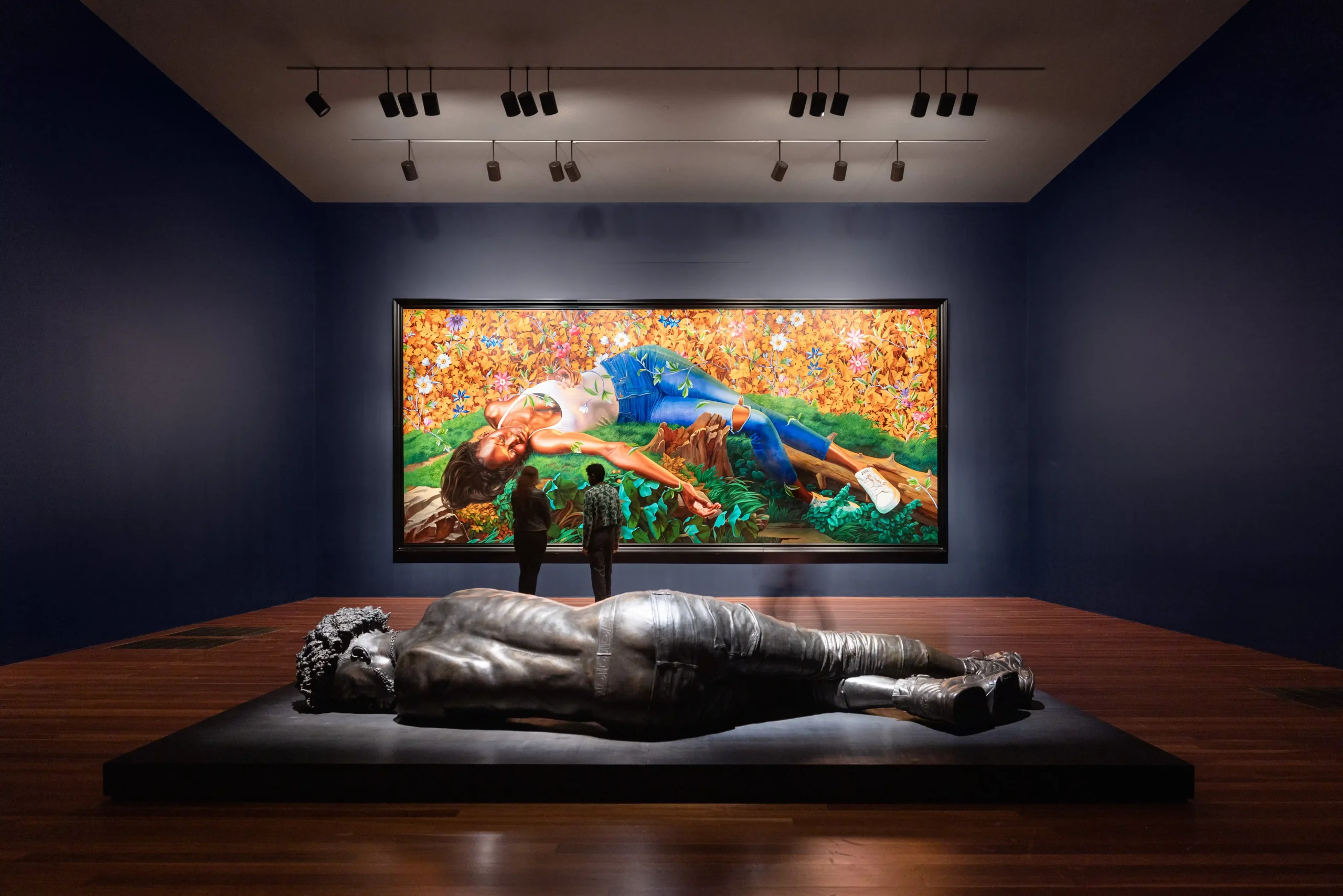Kehinde Wiley: An Archeology of Silence
US Premiere at the de Young Museum, San Francisco
Photography: GARY SEXTON
March 18- October 15, 2023
Massive, exquisitely rendered, and weighted with significance, the work proves both of the moment and transcendent of it.
James Tarmy, Bloomberg
Kehinde Wiley (b. 1977, Los Angeles) is an American artist best known for his portraits that render people of color in the traditional settings of Old Master paintings. Wiley’s work brings art history face-to-face with contemporary culture, using the visual rhetoric of the heroic, the powerful, the majestic and the sublime to celebrate Black and brown people the artist has met throughout the world. Working in the mediums of painting, sculpture, and video, Wiley’s portraits challenge and reorient art-historical narratives, awakening complex issues that many would prefer remain muted.

The works portray Black men and women as icons, and while vulnerable, the figures exude a sense of resilience and perseverance.
In 2018 Wiley became the first African-American artist to paint an official U.S. Presidential portrait for the Smithsonian National Portrait Gallery. Former U.S. President Barack Obama selected Wiley for this honor. In 2019 Wiley founded Black Rock Senegal, a multidisciplinary artist-in-residence program that invites artists from around the world to live and create work in Dakar, Senegal. Wiley is the recipient of the U.S. Department of State’s Medal of Arts, Harvard University’s W.E.B. Du Bois Medal, and France’s distinction of Knight of the Order of Arts and Letters. He holds a BFA from the San Francisco Art Institute, an MFA from Yale University, and honorary doctorates from the Rhode Island School of Design and San Francisco Art Institute. He has held solo exhibitions throughout the United States and internationally and his works are included in the collections of over 50 public institutions around the world. He lives and works in Beijing, Dakar, and New York.
Kehinde Wiley: An Archaeology of Silence is a new, monumental body of work created against the backdrop of the COVID-19 pandemic, the murder of George Floyd, and the worldwide rise of the Black Lives Matter movement has its debut in 2022 at the Venice Biennale.
“I wanted to create an American story that can be appreciated by all parts of the globe,” Wiley said on a recent afternoon in his sprawling Williamsburg, Brooklyn, studio, where various works-in-progress were propped against one long wall. “In America, to be honest, there’s a different type of relevance.”
Dionne Searcey, New York Times
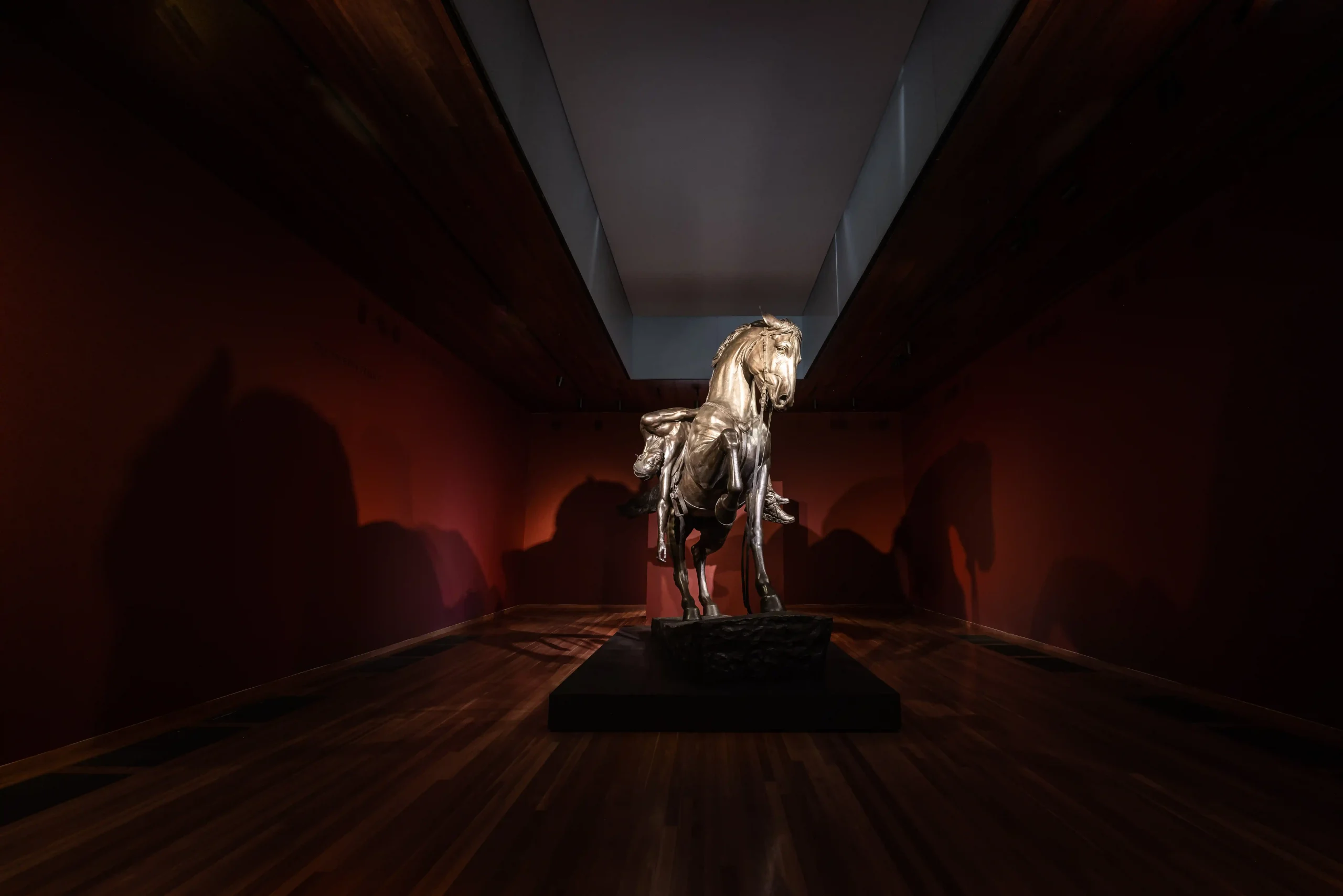
FAMSF Director and CEO Thomas Campbell: “As part of the Museums intentional focus on exhibiting the work of groundbreaking Black artists, it is an immense privilege to host Kehinde Wiley: An Archaeology of Silence at the de Young museum.” The exhibition includes 25 works – some are the largest paintings and sculptures Wiley has created to date, as well as some of the smallest. They are also the largest paintings to have been exhibited at the DeYoung Museum. The series uses scale to elevate the people depicted to heroic status. Thomas Campbell: “Utilizing the historical visual language of the dying hero, Wiley’s portraits of Black youths render visible previously obscured victims and survivors of systemic violence. In the Bay Area–a place that has resisted violence against Black people, as evidenced in the Black Power movement and the current Black Lives Matter movement–Wiley’s work has deep resonances.”
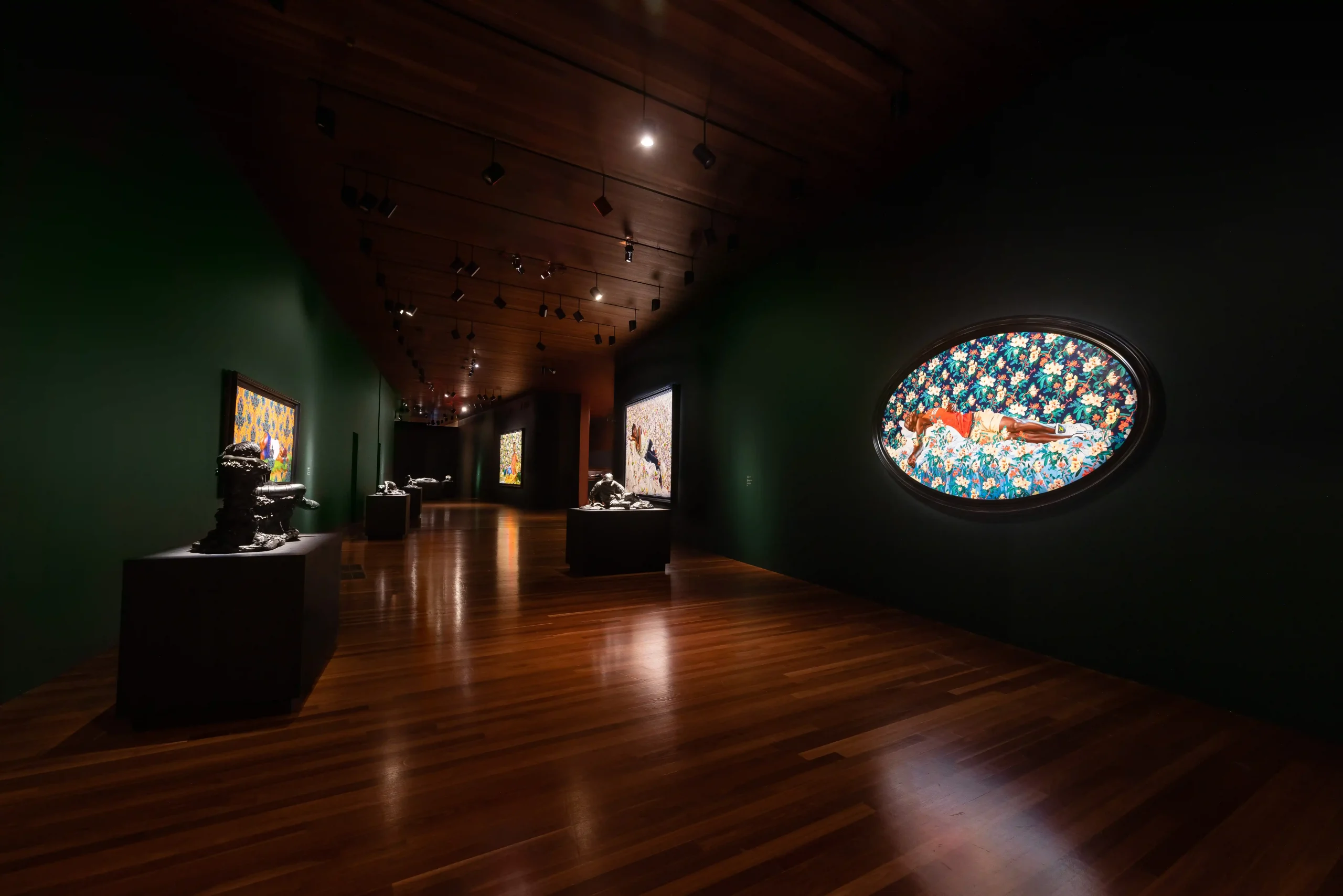
The artist’s 2008 Down series featured a group of large-scale portraits of young Black men inspired by Hans Holbein the Younger’s The Dead Christ in the Tomb (1521–22). Holbein’s painting triggered an ongoing investigation into the iconography of death and sacrifice in Western art that Wiley traced across religious, mythological, and historical subjects.
‘An Archaeology of Silence’ reconceptualizes this research into paintings and sculptures that confront the legacies of colonialism through the visual language of the fallen figure. The resulting paintings of Black people struck down, wounded, resting, or dead, all referencing iconic historical paintings of heroes, martyrs, or saints, offer a haunting meditation on the violence against Black and Brown people through European art historical references.
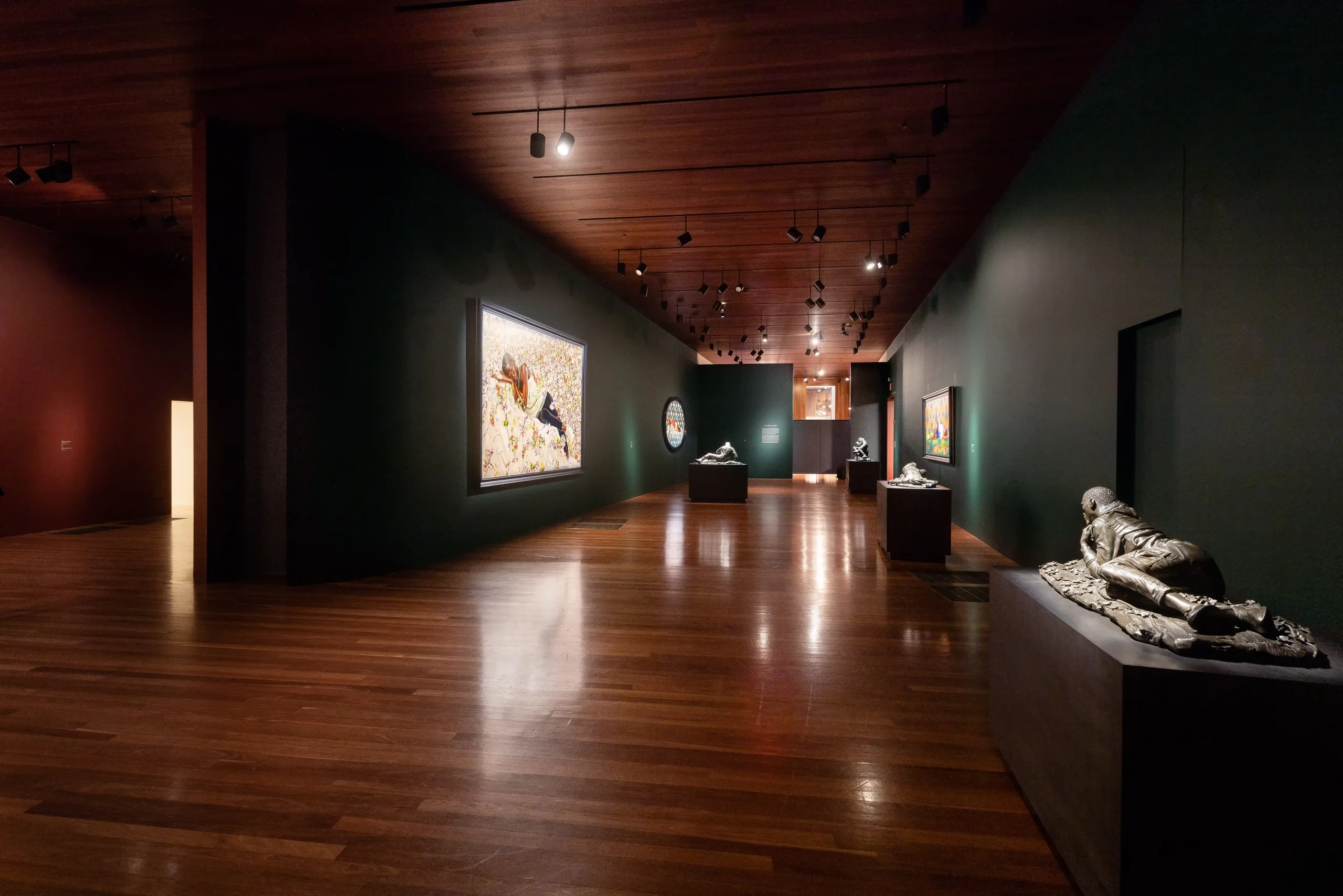
” By inscribing Black people into known examples of Western painting and sculpture, Kehinde Wiley counters the historical erasure of people of color from the dominant cultural narratives,” said Claudia
Schmuckli, Curator-in-Charge of Contemporary Art and Programming at FAMSF. “This new body of work forgoes the rhetorical tools of empire that have informed his portraiture thus far to shift the conversation toward a recognition of suffering and resilience that is both vulnerable and strong, elegiac and ecstatic, devastating and beautiful.”
What Schmuckli identifies as a tension between “transience and transcendence”—two concepts that radiate throughout the Western art historical canon—is also at play in the vivid floral backdrops of the paintings (a Wiley signature) and the vine-choked ground of some of the bronzes. “This body of work features a combination of both decaying and flowering fauna,” she says. “They really ground the figures in this narrative of being vulnerable, being consumed, but also resisting that consumption, insisting on life, insisting on a flowering.”
Marley Marius, Vogue
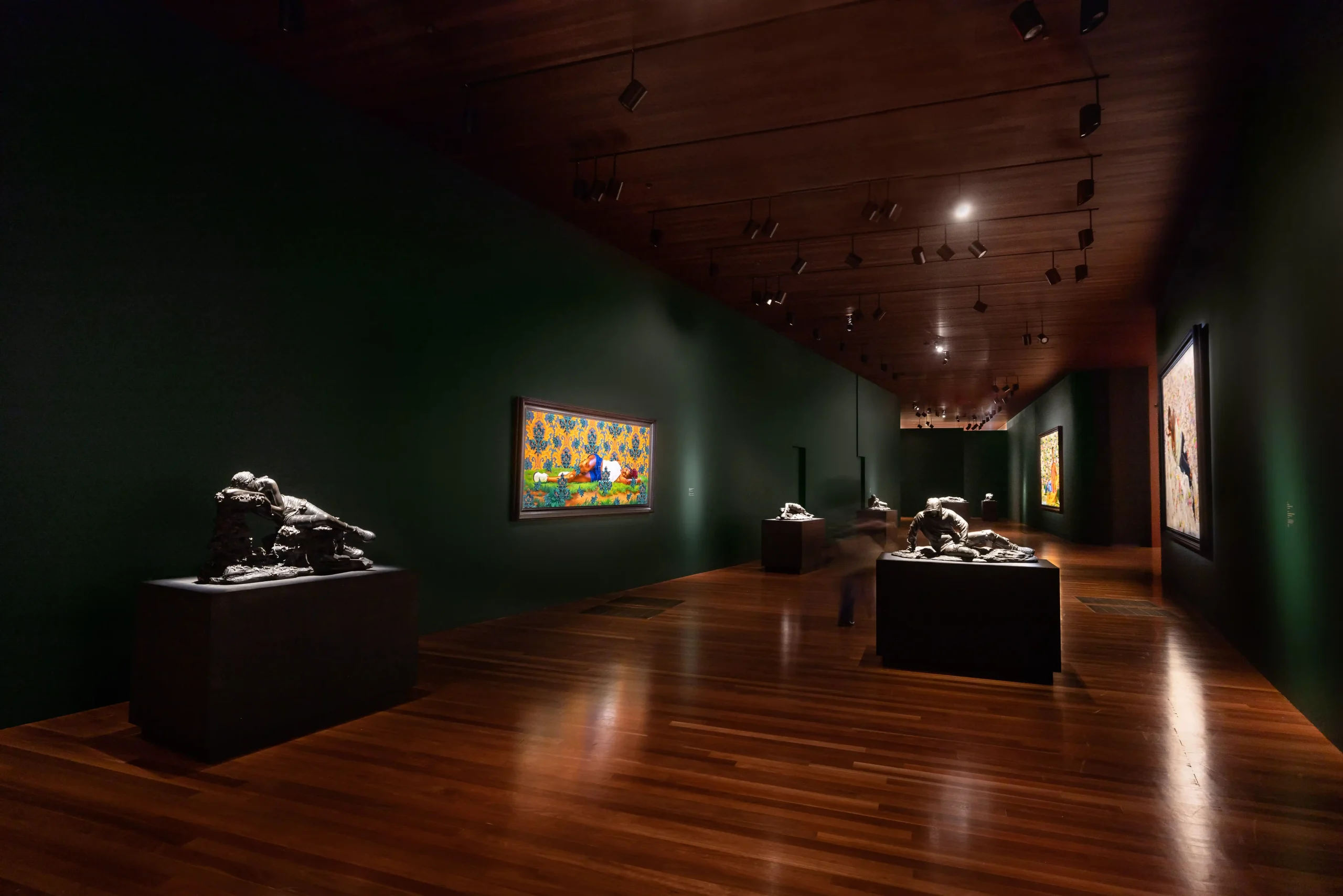
The exhibition is curated by Claudia Schmuckli, Curator in Charge, Contemporary Art and Programming at the
Fine Arts Museums of San Francisco.
Exhibition Organization
This exhibition is organized by the Fine Arts Museums of San Francisco.
Sponsors
The Ford Foundation ( Presenting Sponsor)
Google (Provide eight weekends of free admission and support for public programming)
Generous support is provided by The Harris Family, Charles and Brandi Hudson, Nion McEvoy and Leslie Berriman and Sonya Yu. Additional support is provided by The Adamolekun Family, Quinn Delaney and Wayne Jordan, Delvecchio and Kelly Finley, Elaine A. Mellis and Lisa Blackwell Properties.
Public Programming + Resource Library
The museum’s Piazzoni Murals Room (PMR) near Wilsey Court, will be used as library for visitors to reflect and
access resources to learn more about the exhibition and its themes. Utilizing reflection tools such as anonymous
comment cards, drawing materials, audio recordings, and books and magazines, PMR will offer visitors a space to
work through the emotions Wiley’s complex imagery may conjure. Visitors will also have access to resources
about the history of systemic violence against Black people in the United States, and resistance to systemic
violence that persists in contemporary society, specifically in the history of the Bay Area.
deyoungmuseum.org

